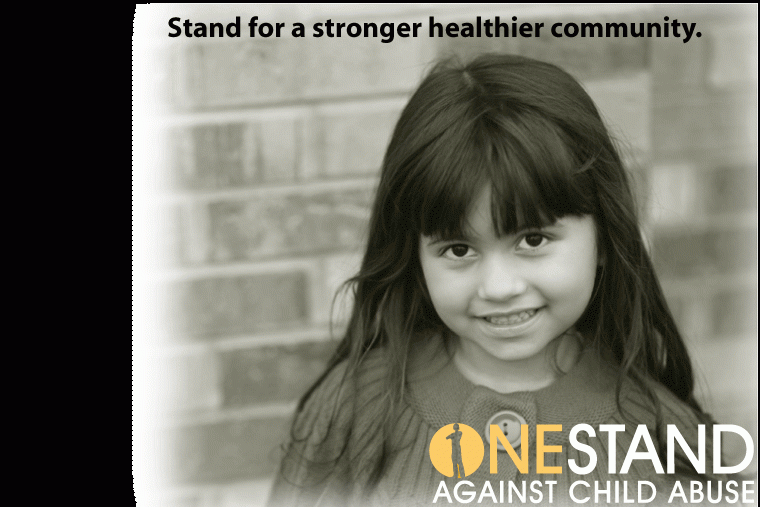Food Addiction Is Yet Another Effect of Child Abuse, But How Is It Being Prevented? [VIDEO]

Abusing a child either physically, sexually, or emotionally deeply impacts a child's well-being well into adulthood, often throughout his or her entire life. A new study uncovers yet another possible consequence of abuse to add to the growing list: food addiction.
The study found that 57,321 women who were enrolled in the Nurses Health Study II (NHSII) reported severe physical and sexual abuse as children. These women had a 90 percent higher risk of food addiction than those who weren't abused, according to MedPage Today. Overall, 8.2 percent of these women met the criteria for food addiction and almost two-thirds of them were obese in 2009.
The NHSII included 116,430 female registered nurses who were recruited in 1989 when they were 25 to 42 years old. In 2001, about 90,000 participants were given surveys addressing their history of physical and sexual abuse before they reached the age of 18. In 2009, they were sent a modified version of a survey called the Yale Food Addiction Scale, which is used to determine compulsive eating behaviors.
The survey tested its respondents for distress over eating as well as answering yes to three or more of seven symptoms:
- Eating when not hungry four or more times a week
- Worrying about cutting down on certain foods four or more times per week
- Feeling sluggish or fatigued from overeating two or more times per week
- Experiencing negative feelings from overeating that interfere with other activities two or more times per week
- Having physical withdrawal symptoms when cutting down on certain foods two or more times per week
- Continuing to consume the same amount of food despite significant emotional or physical problems due to overeating at any frequency
- Feeling the need to eat an increasing amount of food to reduce distress
When it came to physical abuse, abuse was categorized into four categories:
- None
- Mild, which included being pushed, grabbed, or shoved any amount of time, or being kicked, bitten, punched, or hit with something once
- Moderate, which included being hit with something more than once or physically attacked once
- Severe, which included being kicked, bitten, punched, or physically attacked more than once, as well as being choked or burned
Sexual abuse was rated as none, sexual touching only, one experience of forced sexual activity, or more than one experience of forced sexual activity.
The researchers found that combined experiences of physical and sexual abuse yielded the highest food-addiction risk, and that abuse throughout childhood and adolescence posed a greater risk than abuse in a single time period.
Lead author of the study, Susan A. Mason, PhD of Brigham and Women's Hospital in Boston, told MedPage Today that the findings were only preliminary, and that the next step in this process is to figure out where the vulnerabilities are so that they can plan interventions for at-risk people.
"We are becoming more and more aware of the long-term health consequences associated with childhood abuse," she said. "But we need a better understanding of the psychological reasons why some women who are victims of this abuse appear to overeat as a coping strategy."
The study was published online in the journal Obesity.
April is National Child Abuse Prevention Month, but abuse happens all year round. What exactly is being done to help prevent child abuse?
The organization Aid to Children and Adolescents at Risk Foundation (ANAR) created a thought-provoking ad that targets children who might be walking around with parents or other adults, who may be their abusers, according to Gizmodo.
The ad was created using lenticular printing, a technique used to produce images that have the ability to change or move as it is viewed from different angles. Using this technique, ANAR created one image that appears to adults above a certain height, and another image to kids under that height. Adults only saw a boy's face, while children saw the boy's face with bruises. The ad also had different messages for adults and kids. For adults it read, "Sometimes, child abuse is only visible to the child suffering it," while to kids it added, "If somebody hurts you, phone us and we'll help you." ANAR's number was next to that message.
Other efforts to prevent abuse are being conducted throughout the world. Karlyn Percil, a banker in Ontario, was sexually abused as a child. She released a video as part of Sexual Assault Awareness Month, which told her story of abuse.
"We as a society have the responsibility to fulfill children's rights," she said in the video. "We need to ensure that the lives of boys and girls are free from sexual abuse."
In an interview with The Huffington Post, she spoke about her participation in the global effort to prevent child abuse.
"My work first started with UNICEF — they are taking a multi-pronged approach to this issue, having discussions at a regional level with Caribbean officials and partners," she said. "The video was, in some ways, to show other victims who may want to come out that the Toronto Police have trained officers who can and will help them. My role is also to share my story and to let them know that they are not alone. We often feel like we are alone when we go through these horrible experiences."
According to the U.S. Department of Health and Human Services, 905,000 children were victims of child abuse or neglect in 2006. It can have a range of effects on a child including impaired brain development, poor physical health, juvenile delinquency, and abusive behavior.
Source: Mason S, Flint A, Field A, et al. Abuse Victimization in Childhood or Adolescence and Risk of Food Addiction in Adult Women. Obesity. 2013.



























